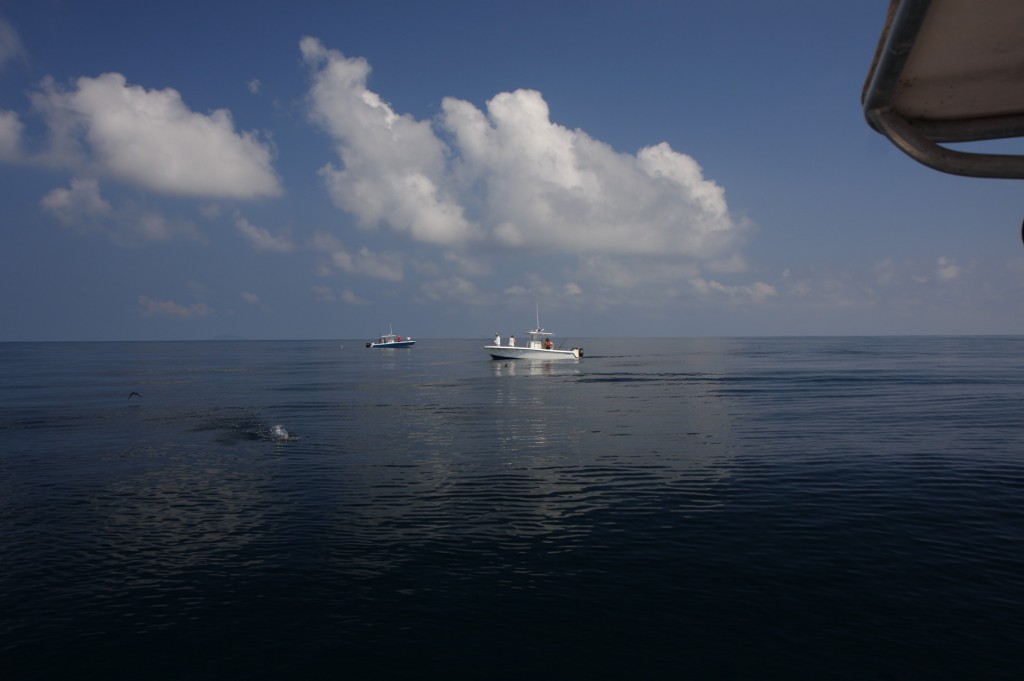I was just looking through some photos from last season and I cam across a couple that I thought were hilarious. We had some fly fisherman come down and Pete shot some awesome underwater footage for them. Anyway, Morten battled this tuna on fly for over an hour. It ended with a kiss and a homemade bat made by our cook!
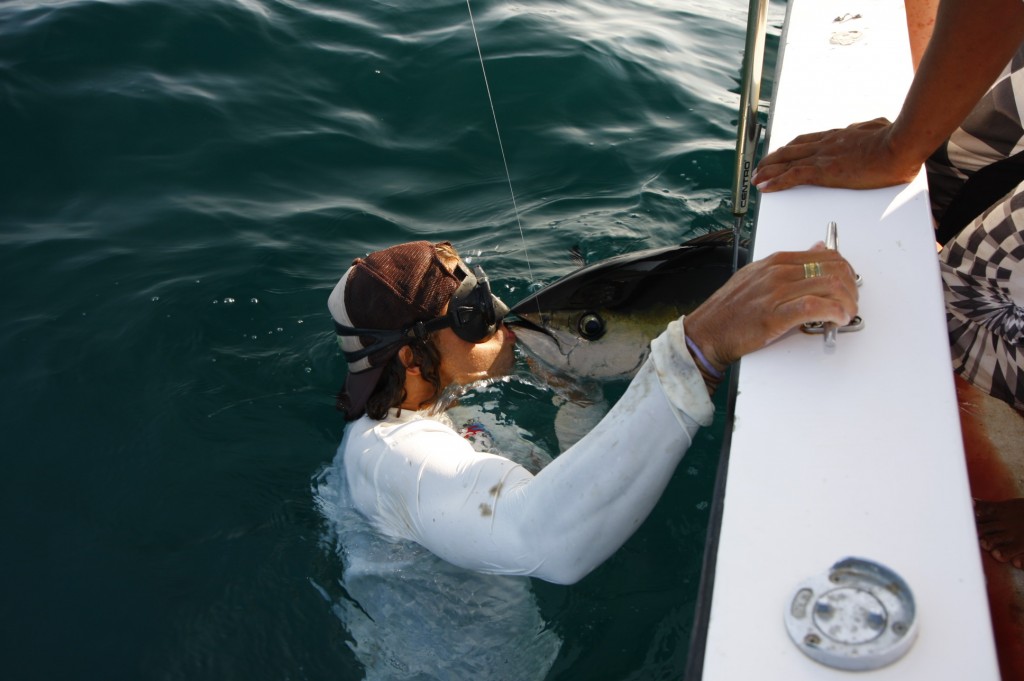
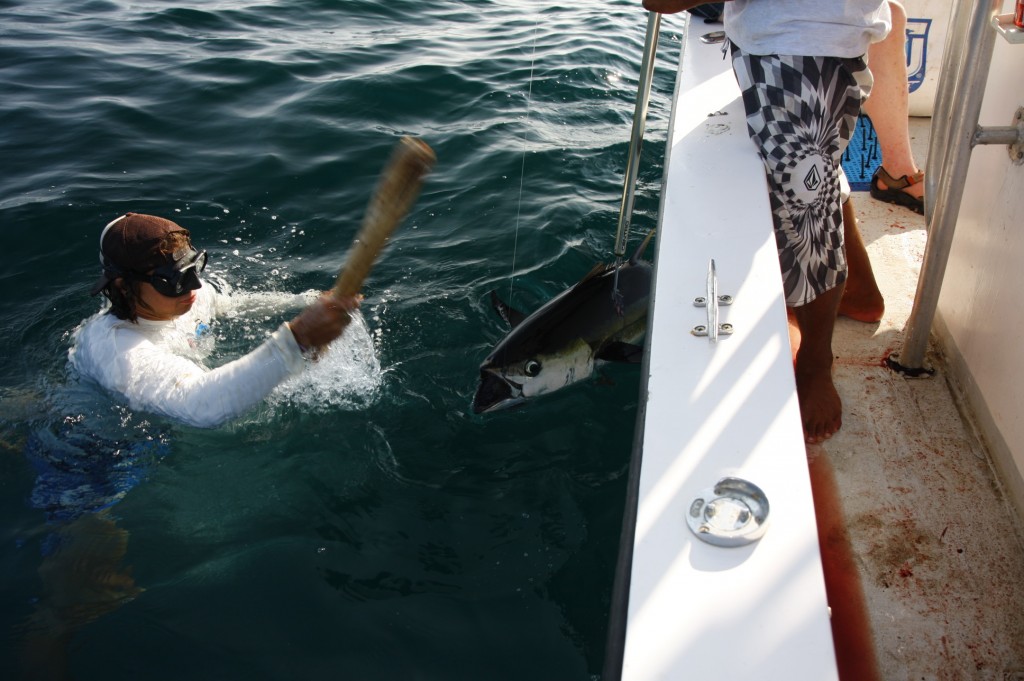
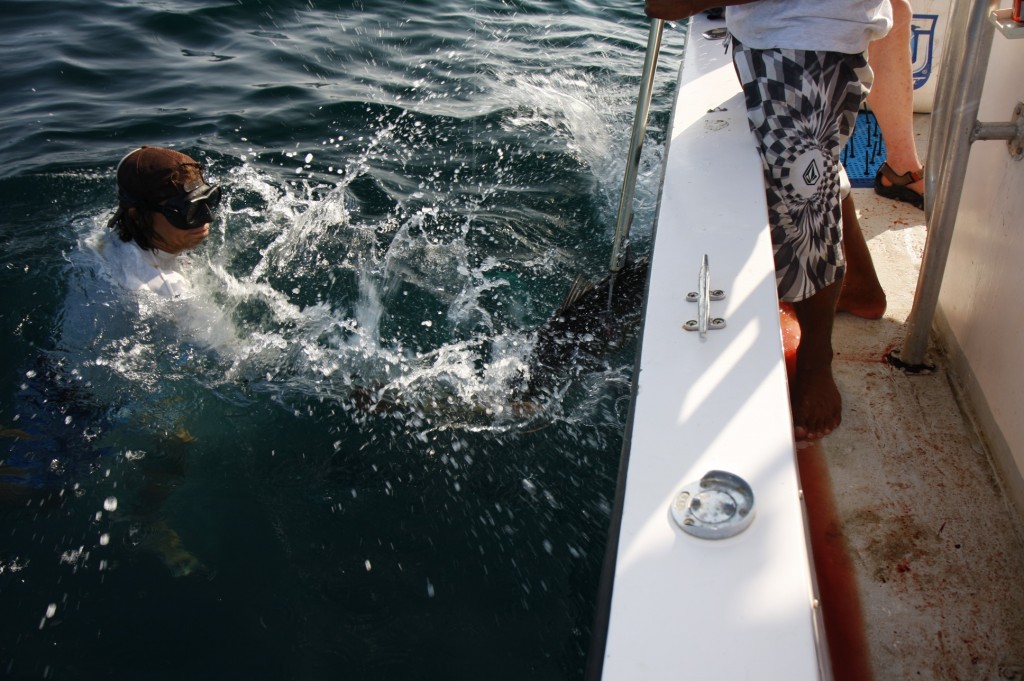
Month: October 2011
Bait Ball On The Hannibal Bank
We came upon this bait ball out on the Hannibal Bank during one of our trips last season during the month of April.
Necessary Equipment To Shoot And Land Yellow Fin Tuna
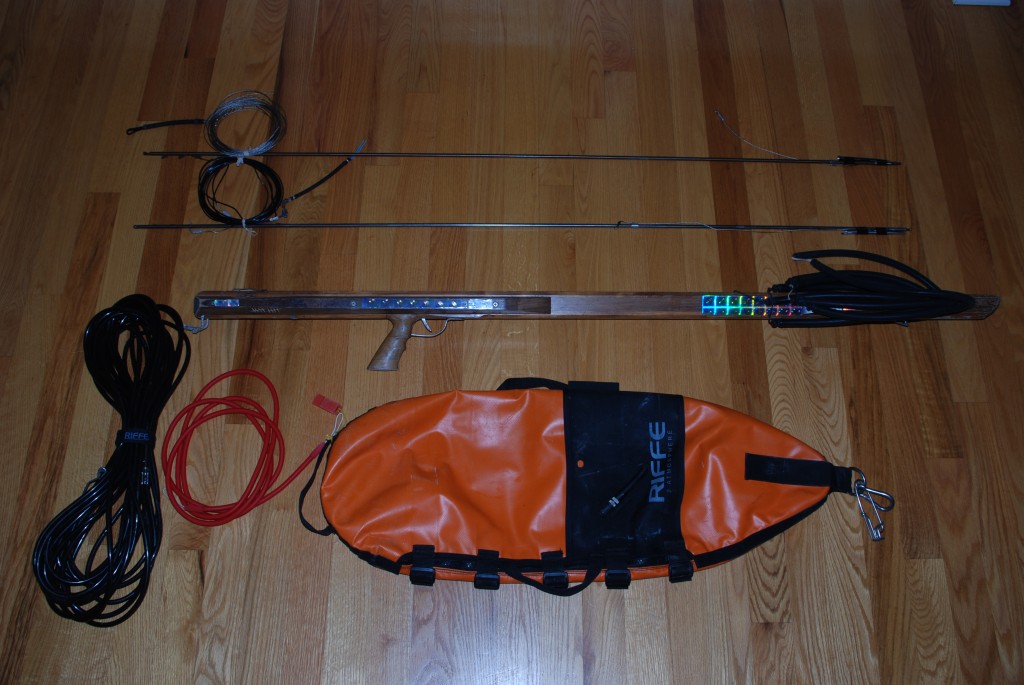
Here is a overview of the equipment that I have used to land many yellow fin tuna, ten of them being over 100 pounds, the biggest weighing in at 269 pounds. Though this set up has worked for me, everyone’s personal set up varies, and there is no real right or wrong way. The set up I use could be considered a minimal set up. The advantages being that it is a little easier to travel with and get in and out of the boat. I will start with a description of the gun I use. The main gun I use for shooting yellow fin tuna is the Andre Gold 160. It is made out of teak, has a wing kit, a open track and is 64 inches long. It comes stock with 4 5/8th bands, and a 5/16th shaft that is 67 inches long. I add a fifth band to the gun, as well as a shorter shaft. I like to shoot a 65 inch shaft with a 5/16th slip tip. A 5/16th shaft can be considered kind of thin for shooting tuna with, but I feel I get a bit more distance with the lighter shaft versus a thicker one. The obvious draw backs to the thinner shafts are the fact that they bend a lot easier and don’t gain as much momentum after leaving the track of the gun. I rig the gun with stainless cable instead of mono. Now onto my floatline/float set up. I use the Riffe 2 atmosphere float coupled with a 75 foot hard float line attached to a ten foot bungie that stretches to 40 feet. I love the riffe 2 atmos float, and would highly recommend it to anyone looking to shoot big pelagic fish. It is built very tough, is easy to travel with, has 95 pounds of lift when fully inflated and can be submerged up to 66 feet (2 atmospheres) deep before it “implodes”. The one drawback to this float is the fact that in order for it to be filled to its full capacity, a compressor must be used. Though the floatline/float set up I use has been successful in landing some large tuna, I will say that the biggest one I killed (269 pounds) buried the riffe float down to about 40 feet and at one point I thought I was going to lose all my gear. This being said I’m not sure what would happen with a larger fish in the three hundred pound range. I have often thought about making the switch to a 75 foot bungie versus the hard float line. I know a lot of guys who prefer the bungies over the hard float lines, and when perusing large game fish it is always smart to beef up your equipment as much as possible so as not to lose the chance at a once in a lifetime fish. To play it safe, I would recommend a bungie in the 75 to 100 foot range coupled with a riffe 2 atmos float as well as a second float to trail the riffe float.
Spearfishing Panama in October
It’s just not a good idea to go diving in Panama during the month of October. For those of you who are thinking about coming down in October, take a look at this video I shot this afternoon from Morro Negrito:
It’s been like this almost all week! Better off just avoiding the risk. Don’t get me wrong, there are some days when the weather is working. It just takes a few weeks for the ocean to settle down. Shoot us an email and we can give you better info on dates when the conditions will look more like this:
